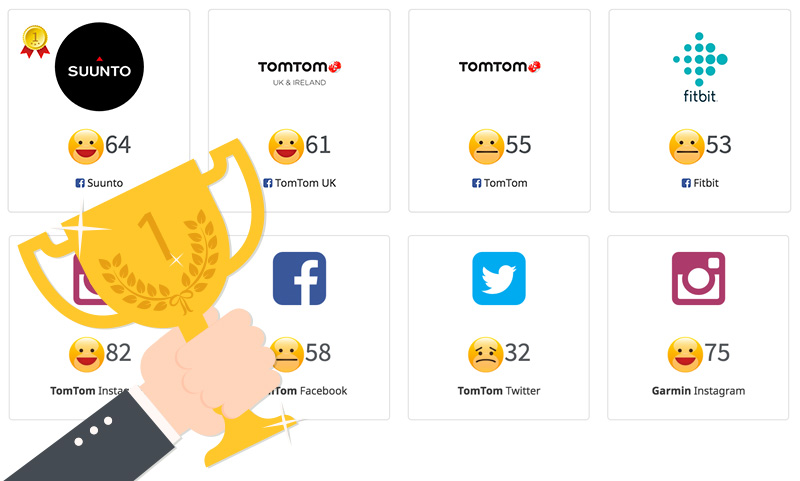How To Create Long Lasting Social Media Content
Sahail Ashraf posted on 6 July 2016
Content ain’t what it used to be.
In the old days you could quite legitimately rely upon long written content, with a few keywords thrown in for good measure. With social media becoming very much a quick and visual channel though, that has all changed. Now, it is all about getting attention and keeping it, often for just a few seconds.
But if you want to make content that lingers, that actually stands the test of time on social, it can still be done.
The basic message here is clear: create the kind of stuff that people will talk about and you can’t go wrong.

AN OLD CHESTNUT
Our first piece of advice may well come from The School of the Outrageously Obvious, but we don’t care. Now more than ever it is absolutely vital that you simply create awesome content. And if you’re not creating awesome content all the time, at least link to people who are.
Content on social media is way past saturation point, and the only way your content is going to last any longer than a few minutes on social is if you are making stuff that literally stops people in their tracks. Consider creating headlines, for example, that will provoke a reaction. We’re not talking clickbait here, but instead the use of headlines that genuinely intrigue.
Also, think carefully about upping your game across the board, and making your content uniformly professional. If you do this, when you create that once-in-a-lifetime video, it will be part of an overall content strategy that is powerful and destined to bring you attention.
Whatever you do though, take the time to make each piece of content meaningful, powerful and worth sticking around with. Eventually, people will.
MAKE IT REAL
Content that has an emotional hook is more likely to last longer. If you have a picture that grabs people and doesn’t let them go until they’ve cried a bucket of tears, it is content that will last.
Go to the core of the message you are trying to get across as a brand and create content around it that links to that message powerfully. This basically requires that you live and breathe the ethos behind the brand, and are able to communicate this with honesty. Get in touch with your feelings, in other words.
If your content makes you cry (for the right reasons) or simply makes you feel human, it is going to get shared and liked for a while. You can’t do this every day (the Kleenex budget would go through the roof) but every now and then go for the stuff that gets people’s spines tingling. It is guaranteed to make a huge impact.
There are some great examples of brands doing this out there, and they all have one key thing in common. They tell an emotional story that resonates. This is perhaps best done with video because video is something people like to share. It also requires less work than reading, and imagery and music combined is always a winner.
There is one amazing example, and it is one that is often used. There’s a reason for this. The Dutch funeral company Dela decided to create a video that simply touched people. It had a huge impact (a prize-winning one in fact) and is regularly pulled out as an example of an emotional piece of content that people will see again and again.

Check it out, and you’ll soon see how something like this will last long after it is first uploaded. People connect with this kind of content.
WHAT DO THEY WANT?
This kind of thinking isn’t new, but it is becoming even more important in the social media field, where people have small attention spans and want to be captivated.
You need to know what people want to see. This is a delicate operation, because if you’re new to social media, it means you can only try and then wait and see. If, however, you have racked up plenty of time on social, you can go to your analytics and work out what kind of stuff is most popular when it comes to the content you produce. The stuff that gets the most engagement is the open door.
Find out what this is (video, infographics etc) and then focus all of your energies on creating excellent examples of it. If it is content that is popular because it focuses on news sites, for example, create more of it, but make it the very best news-related content you can, with links to other items, and a great headline, for example.
Take a look at Locowise 3.0. Our new app crawls the web for content relevant to your field that’s shared the most. It then gives you a quick overview of stuff that works and helps you make better content decisions.

Essentially, you are looking for content that moves people. It only makes sense to create more of what works. And if you make it even better, it will start to linger for longer.
GRAB SOME AUTHORITY
More and more social media content is using authority to create lasting impact. The most obvious way to do this is to create content that has stats and data behind it. This works because it shows that you are making a conscious effort to treat the audience with respect.
You know they are intelligent, and you’re using data that proves your point because of this. Content that is educational is making a bit of a comeback, and brands are using data to really create stuff that people want to hold onto,and share.
The next time you create content, consider dragging out the stats. People are impressed by data, and if it is genuinely meaningful and useful to know, it will lead to more of your audience hanging on to what you create. It just adds weight, and creates instant authority. People respect this, and will choose your content over that of the other brand every time.
KEEP IT SIMPLE
The best, most obviously long-term content is as simple as it could possibly be. There are no ridiculously long words, and the creators don’t treat their audience like a select and unique club that no one else can enter.
Create content that is simple and very accessible. Keep the language as clear and user-friendly as you can. Make infographics easy to follow. And videos just need to be short, to the point and very clear in their message.
MAKE IT (EVEN MORE) REAL
Your brand does not exist in a vacuum, and you need to recognise that. Authenticity counts now more than ever, with many brands basically paying their way through the marketing mess. You need to show you’re real.
Focus on making sure that you show the warts too, not just the pretty bits. If things are going a little rough for your brand, be open about it. Some brands publish profits, but you don’t need to do that. Instead, offer messages of resilience and toughness if you’re having a bad month. Or show how your customers still like what you do, no matter what.
You get the picture. Your audience needs to know you are real, and that you have feelings. It’s tough to get right, but the more honest you are about your business and how it feels to be a brand with all the responsibility that has, the more likely it is that your content will last.
HIT THE VALUES
Get to know your customers and see what it is that ticks all of their boxes. Find out what kind of TV shows they like and the movies they are interested in (a simple survey gets this done quickly, and there’s nothing wrong with asking questions like this). Then see which values resonate in their lives.
You can also see what they live like, Their lifestyle is important to you. Think about Nike and how it has a marketing machine that taps immediately into it’s audience and its motivations like an adrenaline shot to the heart. It knows its customers.
Having this kind of knowledge of your customer’s lives and the values that are important to them means that you can create content that is meaningful. Tap into the events that make a difference to them. If your audience is male predominately, big up Father’s day, for example. Or if they’re beer-swilling party animals, hit their values of thrill-seeking and fun (because these are values too) in your social media content.
Hit the right tone with your audience. Go for their values and make them the bedrock of your content. It just means you’re talking to them as human beings, and believe us, it will last alot longer than content for the sake of it.
BE USEFUL, STILL
Yep, content isn’t going to change. The model that was around in the nineties is still relevant today, Create content that is incredibly useful for your audience as much as you can. Never share anything, either, that isn’t of immediate use and interest.
That sharing thing is important. By sharing content that your audience wants to see, you’re being useful. This builds trust, so that when you hit them with that piece your team have been working on for 40 days and 40 nights, it has an impact and sticks around for longer than three minutes. Trust comes from usefulness. And trust means people will hold onto your content, and share it.
You may have gathered that social media can be rather cruel and instant for brands. But it doesn’t have to be about the quick win every time. Sit back, take a breath, and aim for authenticity and authority. This makes your brand more trustworthy, and also a name that the audience knows will create content that is worth seeing again and again.
It isn’t rocket science, it just requires you to think things through and concentrate on being as real as possible. Above all, it requires that you connect on a meaningful level with your audience. That takes away that instant, trashy feel, and replaces it with your brand voice.






